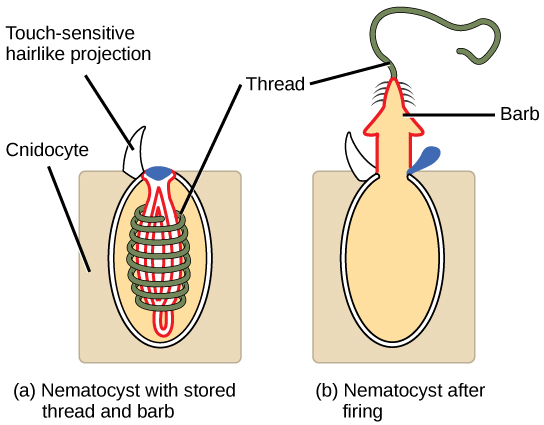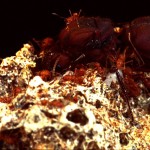Everybody knows that coral are essential for marine biodiversity. Most people don't know, however, that they are also secretly brutal bad asses. As cnidarians, corals and anemones (anthozoans) are related to the feared jellyfish (medusazoans). The common thread that unites cnidarians is the presence of stinging cells.
Reason #1: They harpoon then digest their prey alive.

Nematocyst. Image credit: VOER
Cnidarians have cnidocytes ("stinging cells") with toxin-filled organelles called nematocysts. A nematocyst looks like a coiled, barbed rope. When prey activates a nematocyst's touch receptor, water rushes in and the nematocyst explodes like a harpoon, releasing poisonous spines that pierce flesh and immobilize prey.
The nematocysts penetrate and ensnare prey. Gastrodermal nematocysts lining the stomach then hold the stunned prey in place to be digested alive.
Reason #2: They regenerate and clone.
Cnidarians have a prodigious ability to heal and even regenerate entire body parts. The common anemone Aiptasia pallida can be dissected, pinned open, then returned to the water; within a few days, it will completely recover.

Image credit: SI
And if a cnidarian can't regenerate for some reason, chances are a clone of the cnidarian already exists to take up the mantle. Most cnidarians reproduce by asexual cloning, either by sprouting a clone off of its body via budding or by splitting into two halves via fission. Some jellyfish reproduce in a cool, bizarre way: miniature jellyfish grow on a stick called a strobila; the jellyfish at the top squeezes off and swims away.
Reason #3: Jellyfish can be polymorphic.

Image credit: VOER
Imagine if people had different body forms that specialized in different activities like feeding or movement. Some hydrozoans do just that: gastrozooid polyps take care of eating, while gonozooid medusae release jellyfish that swim away to start new colonies. A polyp looks like a flower with a stalk, while a medusa has the traditional jellyfish umbrella shape.







